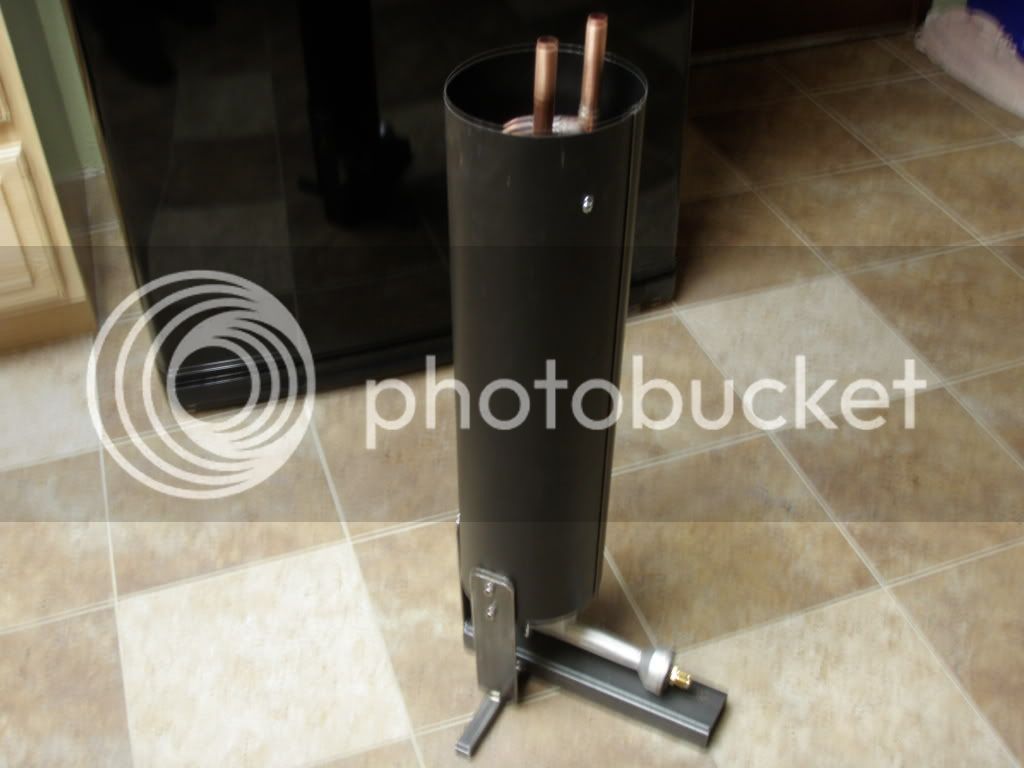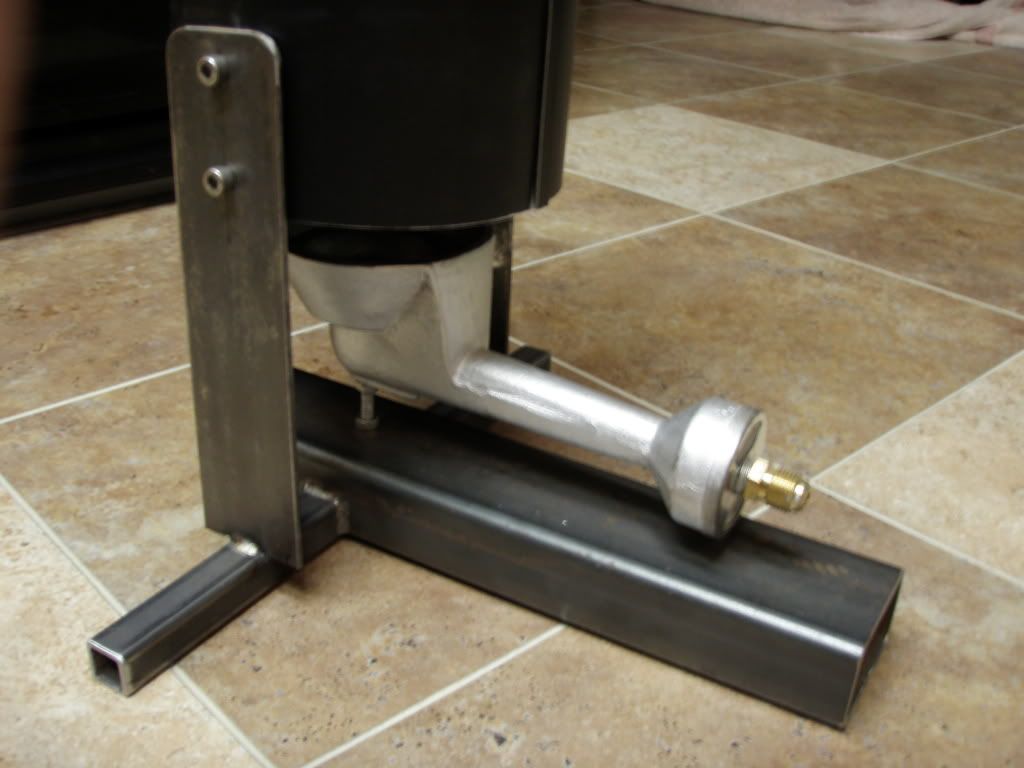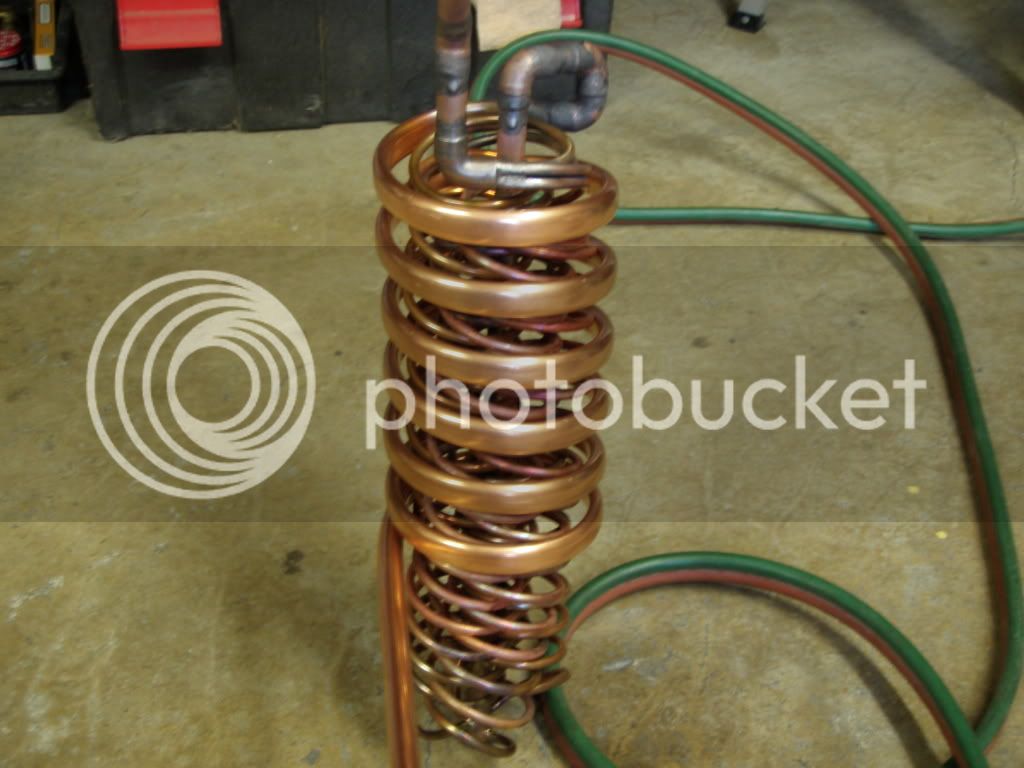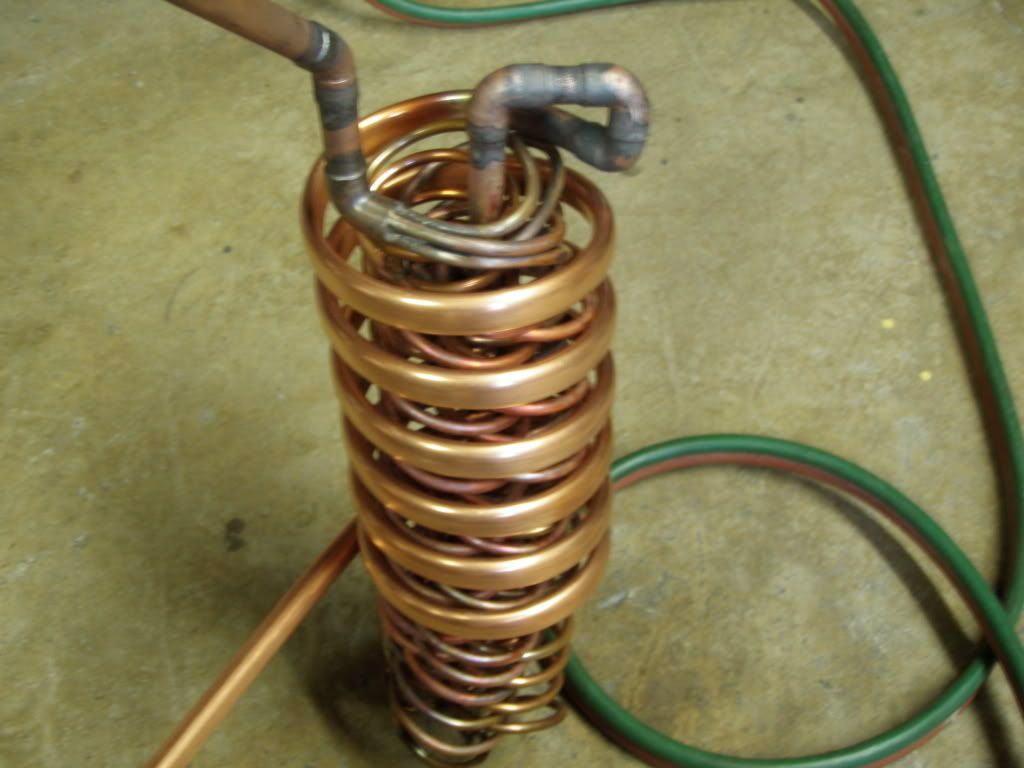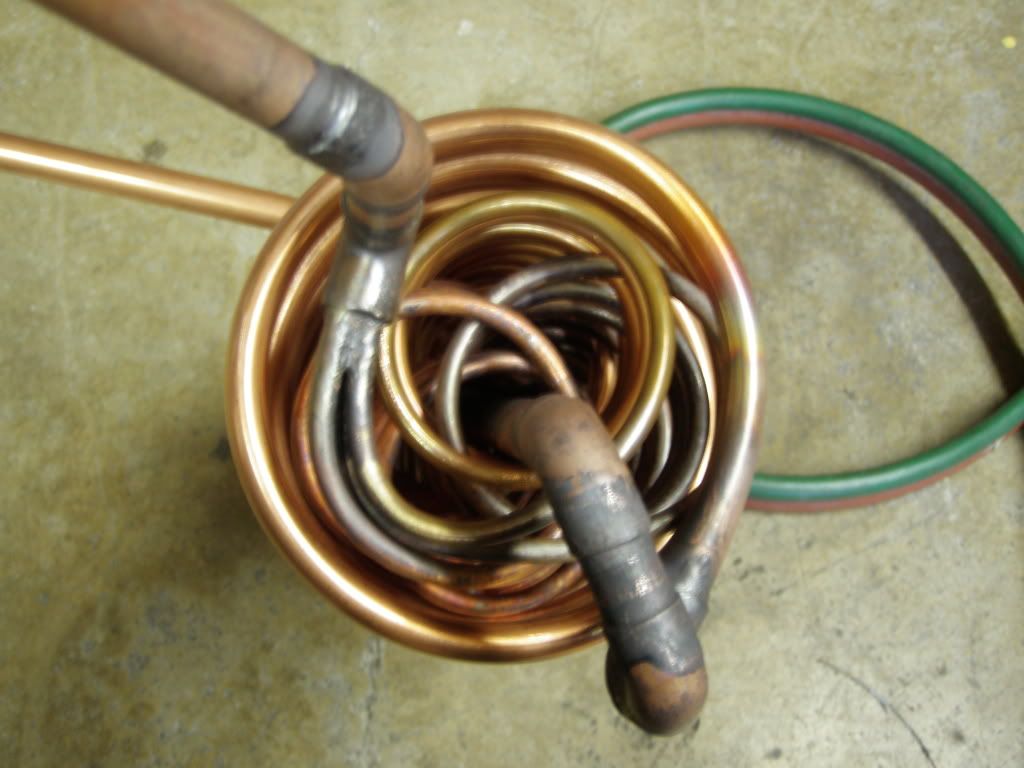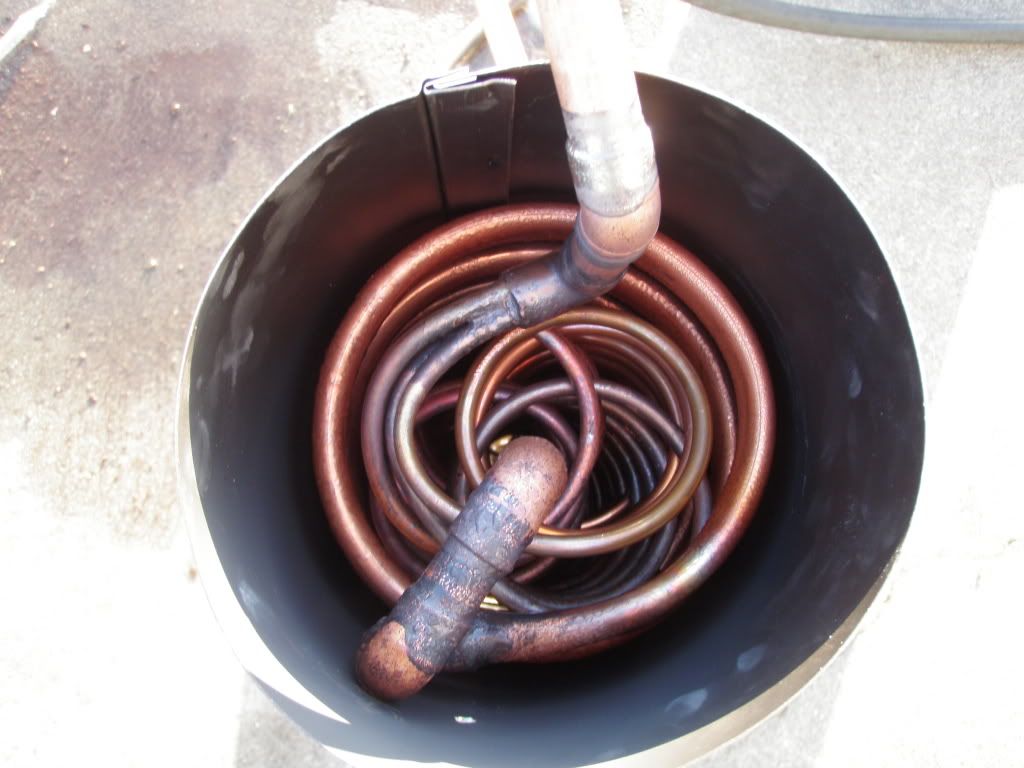You like pics?? I know I do.
Well the boiler got an addition today. I added another coil for a preheat on the incoming water supply. It also acts as a damper cause it bolcks/uses a lot of the heat on the outer edges of the chimney. After trying to bend 1/2" pipe I went and got some of the 1/2" soft copper type L to do the job. When asking the 1/2" tube to bend around 4" diameter pipe, it will flatten out quite a bit. In my case I wanted the flatening. It would allow it to fit around the boiler and in the current chimney. Oh it fits so nice in there.
This mod has increased the efficency by a lot. I fear I am going to have some issues later on with the lower flow. I got the water going at .5 GPM and lit the fire. It was quite easy to achieve the 170 mark. I would say the burner was a tad under half fire. I then let it rip and saw 212 with the boiler stuck in the transition mode between steam and hot water. After that I set the flow at 2oz a minute. AKA 3 GPH. I had no problem getting it to steam up.
This time I chose to do a very rough injection into some water. Not knowing flow rates I filled up the test pot and then slowed things down for the steam. I got some very loud poping at the point where the steam was hitting the water. I drained some off for it to flow into the air and then refilled it. It was then just like air being blown into water. With some back pressure on the system it runs so smooth. The boiler looks like it is under much less stress. I can only assume the pipes are able to sustan a more wet enviroment this way.
The pot of water went up 67 degrees in just 10 mins. I started out at 135 degrees and it hit a wall at 203 degrees in the ten min time frame. The pot of water had 6-6.5 gallons in it. I then cranked up the fire to see if I could get it to boil, after another ten mins it had only risen to 206 degrees. I now see that you need one massive boiler to boil with. This thing rocks and a propane burner would be more efficent at a boil. Though I did not build it to boil with. I guess it is time for some pics.
A shot of the new coil. I bought 10 feet of tube. I only lost about 2" so far.
Another shot of the new coil
A top down of the new coil. You can see how much the 1/2" flattened out. I can assure you that flow throught this thing is no problem at all.
Here you can see it all in the chimney. It fits nice.
In the other pics you can see the input was moved lower on the unit. Here is a shot of the input and the whole boiler.
At .5 GPM and a tad under half fire will get you 171. I watched this for a few mins to see how stable it would be. It only moved a degree or two.
This is a bad shot of the rough injection I did. However I did get a 67 degree boost with no other circulation on the pot. I moved the temp prob around a bit to see how even it was and it was all within a couple degrees. In this pic you can see I have the valve open. I was draining it at this point to see waht would happen to the loud poping noise I was getting. As I mentioned, it was refilled after it had been exposed to air.





































![Craft A Brew - Safale S-04 Dry Yeast - Fermentis - English Ale Dry Yeast - For English and American Ales and Hard Apple Ciders - Ingredients for Home Brewing - Beer Making Supplies - [1 Pack]](https://m.media-amazon.com/images/I/41fVGNh6JfL._SL500_.jpg)



















